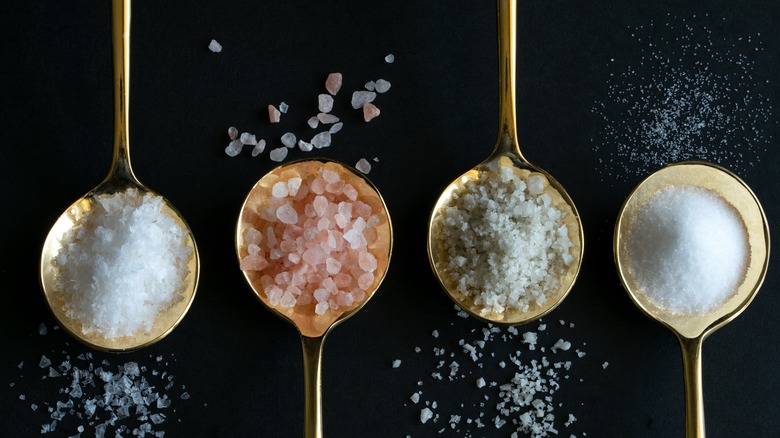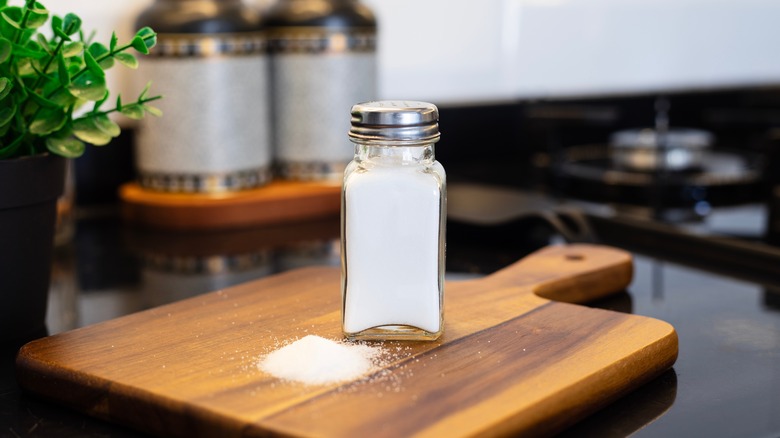The Hands-Down Best Type Of Salt For Baking
We may receive a commission on purchases made from links.
There are tons of different types of salts, and it can be difficult to know which kind to always keep in your pantry (let alone how to actually use them in your cooking). To learn more about which type of salt is ideal for baking, Food Republic spoke to Sam Merritt, the baker behind Sugar Spun Run.
According to Merritt, the best salt to use is the one that the recipe you're relying on calls for. "I know this may sound vague, but different recipes call for different salts because they work differently and serve different purposes," the expert said. "If your recipe doesn't specify, opt for regular table salt, which is the standard and my preference when baking." In fact, most recipes — especially when the salt type isn't specified — are written for table salt. Not only is it the most common variety that people will have, but the smaller crystals in table salt allow it to dissolve more easily into batter, dough, or whatever else you're whipping up.
When it comes to the best type of salt for adding texture to the top of baked goods, grab a flaky finishing salt. "These salts are more delicate and crackly, often irregular or pyramid-shaped, and don't melt instantly on contact (so they add some texture and not just flavor!)," Merritt explained. "A sprinkle of finishing salt is great not just for your favorite chocolate chip cookie recipe, but also brownies, blondies, homemade caramel, or Millionaire's shortbread."
How to choose the right salt substitute
There are times when a recipe may call for a salt that you don't have at home, and while a 1:1 swap for whatever kind is sitting in your pantry sounds like a good idea, it actually isn't your best bet. "[Using a different kind of salt] can have quite an impact; this is largely due to the fact that different types of salt have different densities," Sam Merritt told Food Republic. "If you don't use the salt called for, you could seriously over-salt or under-salt your recipe."
If you're in a situation where you do need to substitute salts for baking, know that some brands are saltier than others, and may require a different measurement. For one specific brand of kosher salt, Diamond Crystal, our expert stated that you'll only need half the listed amount when subbing for table salt. So if your recipe calls for 1 teaspoon Diamond Crystal, use ½ teaspoon table salt. "If a recipe calls for kosher (not specifically Diamond Crystal) but you only have table salt, use about 3/4 of the amount called for," Merritt recommended.
On the off-chance that you only have flaky sea salt or finishing salt at home when your recipe calls for table salt, you can alter the textured salt to get a finer crystal that will dissolve better. "I'd recommend grinding it down to a finer texture first, but be warned that it's not always consistent," Merritt said. This is when a mortar and pestle, like this one from HAWOK, comes in handy.


